Cedar trees are a type of coniferous tree which is native to the western Himalayas and Mediterranean, though can be located throughout most of the world.
About the Cedar Tree
The Cedar tree is native to the western Himalayas and the Mediterranean, though can be found everywhere conditions are ideal for cedar trees to flourish.
Cedars are coniferous and evergreen, with cedar trees, are known to prefer higher altitudes when in nature. Mountain environments provide the ideal climate for trees of the Pinaceae family, though they can be made to grow almost anywhere.
The colors of cedar trees might vary from light to much darker green. Cedars are the subject of considerable debate. The term “true cedar” describes only four types of cedar tree parts of the Cedru family – libani, atlantica, cedar, and brevifolia.
There are many other types of cedar trees that are still called cedars, but that do not fall into the category of traditional (or so-called “true” cedars).
Cedars, true or not, are happy to grow almost anywhere in the world. That is part of what makes the cedar tree one of the most popular trees you can add to a garden.
See Related: Best Clothing Companies That Plant Trees
Different Types of Cedar Trees Around the World
1. Atlantic white cedar: Chamaecyparis thyoides
The Atlantic white cedar is also known as the white cypress and is found native to the Atlantic coast of North America. It’s one of the largest, with the potential to reach up to 80 feet tall at their height.
Sometimes, they are also referred to as swamp cedar due to their preference for swampy, wetland areas. The Atlantic white cedar is also occasionally referred to as a juniper tree.
See Related: Ways to Help the Environment in Everyday Life
2. Bermuda cedar: Juniperus bermudiana
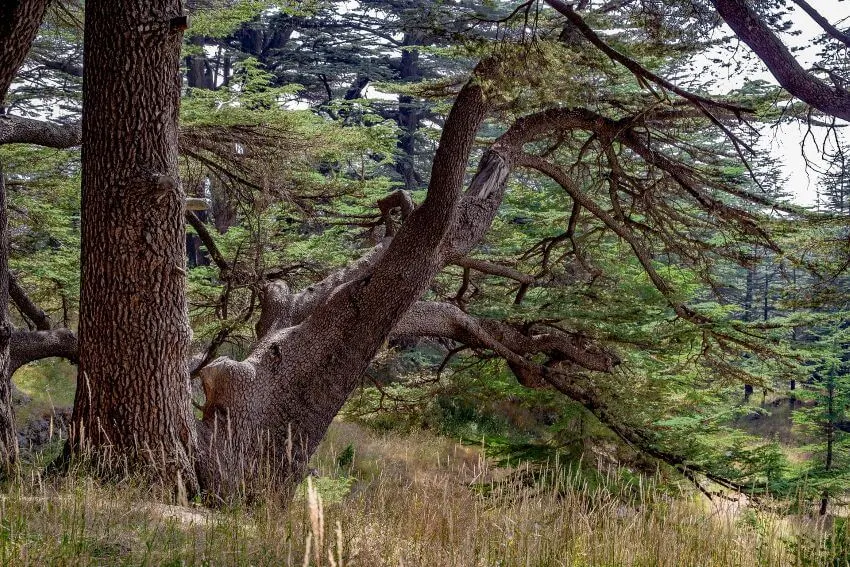
The Bermuda cedar is considered a type of juniper tree native to its eponymous area: this type of cedar originates from Bermuda, and forests of it used to cover the entire length of its coasts.
It is considered one of the most important plants in the area, with plenty of documented cases of early humans being reliant on the Bermuda cedar for their survival in a harsh climate.
Today, only about 25, 000 cedar trees are left in Bermuda. The Bermuda cedar is considered critically endangered and only occurs in this one part of the world.
See Related: Biodegradable vs Compostable: What is the Difference?
3. Chilean cedar: Austrocedrus chilensis
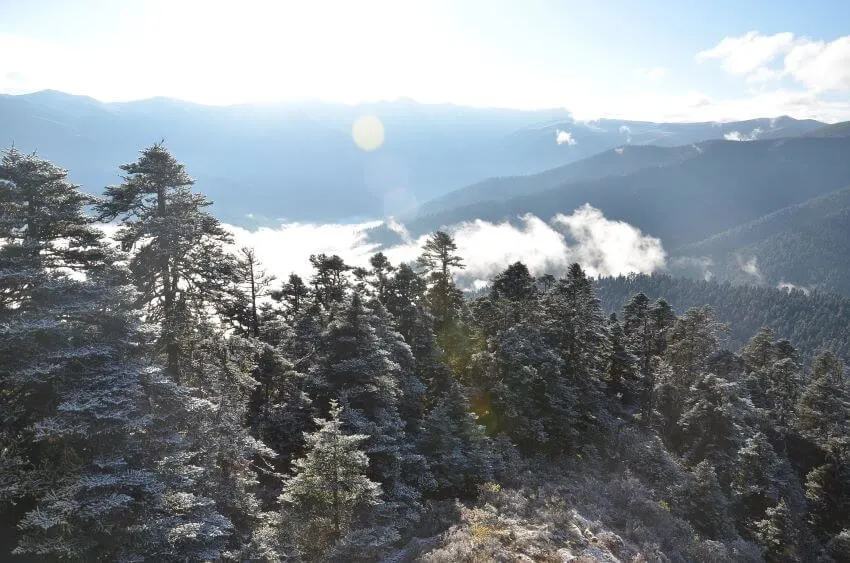
The Chilean cedar is native to the Andes, and sometimes also gets called by its local name: cordilleran cypress.
The rare Chilean cedar tree grows only in southern Chile and northern Argentina and is considered a protected species as a result.
It is known as one of the dense types of cedar. Chilean cedar trees are also particularly fast-growing and reach their top heights far more quicker than other types of cedar.
See Related: Climate Change Quotes That Will Surprise You
4. Clanwilliam cedar: Widdringtonia cedarbergensis
The Clanwilliam cedar is a highly threatened species and is only found in the Western Cape’s unique mountain range area.
This specific cedar tree is used to cover the area, but only a precious few exist in nature today. Early deforestation by settlers contributed to today’s problem of very few natural Clanwilliam cedar trees being left.
Conservation projects aim to increase the number of Clanwilliam cedar trees before this unique cedar is lost to history.
See Related: Conservation vs Preservation: The Differences
5. Eastern red cedar: Juniperus virginiana
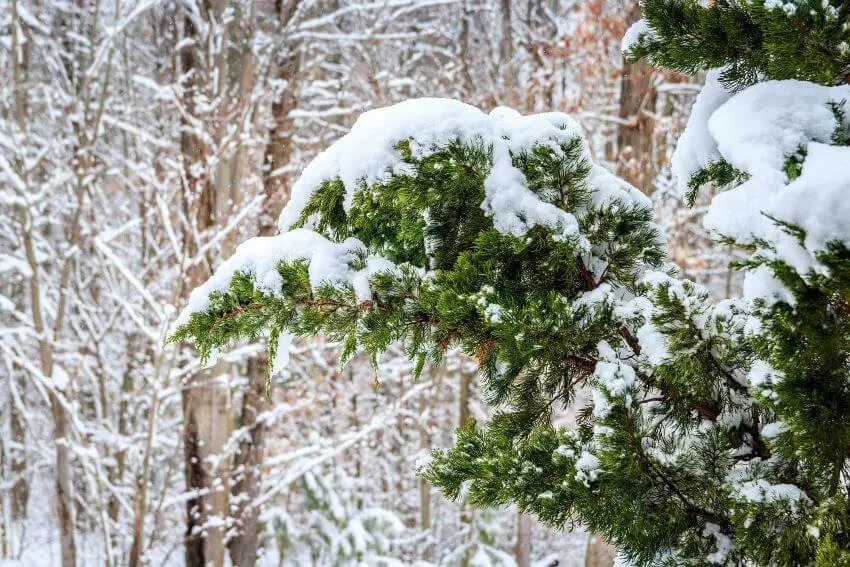
The Eastern red cedar is common and native to eastern North America. It is also one of the perfect examples of a tree that is not a “true cedar” but instead a juniper tree – and technically, still a type of cedar or cypress tree.
Eastern red cedar trees grow up to 40 feet at their ideal length. They are known as red cedar due to the reddish coloration of the bark.
Eastern red cedar is one of the best cedar trees to plant in a garden – and it’s true no matter which climate you might live in. Red cedar trees grow happily anywhere and are native to more than 30 states.
There are many different uses for Eastern red cedar trees, including as coverage – but also for timer and industry, where they are useful as a fast-growing tree preferred for its strength.
See Related: Most Eco-Friendly Cars for Any Lifestyle
6. Eastern white cedar: Thuja occidentalis
The Eastern white cedar is native to eastern North America, and also goes by several other names: the Northern white cedar or arborvitae. The Eastern white cedar is one of the most common conifer trees, preferred by landscapers and gardeners for its ornamental qualities.
Eastern white cedar trees can live for up to 200 years and can grow up to 30 feet in total length. They are fast-growing and achieve heights of up to 24” growth per year in ideal conditions.
Due to their size, a row of Eastern white cedars will require a lot of planning to imagine how they will grow 100 years into the future!
See Related: Why Carbon Monoxide is Bad for the Environment?
7. Calocedrus: Cryptomeria japonica
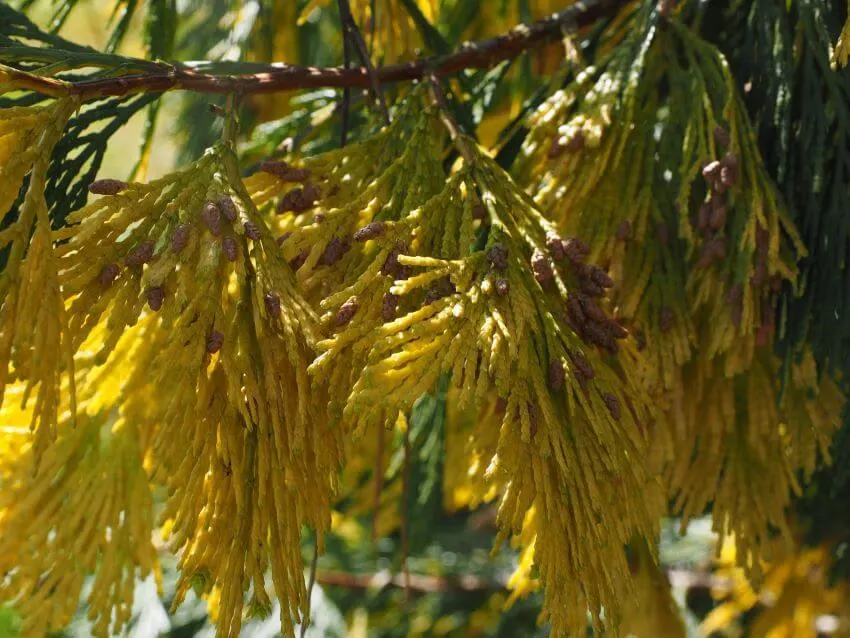
The Clocedrus is a type of cedar tree that is found in North America and East Asia but can be adapted to grow anywhere else in the world.
It also goes by some other names, including the incense cedar – sometimes spelled as incense-cedar.
It is one of the fastest-growing types of cedar trees from around the world.
While it’s not considered one of the world’s four true cedars, this cedar is one of the preferred options for landscapers and gardeners.
See Related: Best States for Living Sustainably
8. Mexican white cedar: Cupressus lusitanica
Mexican white cedar trees are native to Mexico and Central America, and they are sometimes also called cedar-of-Goa or cedro blanco – literally, white cedar.
While they are native to these areas, they have also been successfully brought to other parts of the world (e.g. Costa Rica) where conditions match their native habitat.
Where they grow in nature, Mexican white cedar trees prefer a high altitude. Again, they are adaptable enough to grow at lower heights, too.
The Mexican cypress/cedar tree can be made to grow happily as a bonsai. Adaptability is part of what makes this type of cedar a popular one everywhere.
See Related: Best Biodegradable Clay Pigeons
9. Mountain cedar: Juniperus ashei
The Mountain cedar is one of the cedar trees not apparent from its name at all: it’s not a true cedar tree, but instead a type of conifer – and no, it is not known to prefer mountain environments at all.
Mountain cedar trees are instead native to the central United States, preferring to grow in the harsh heat of Texas.
Sometimes, the mountain cedar tree is also called the Ashe juniper tree.
Mountain cedars grow at a rate of at least 24” per year, which makes them fast-growing like the majority of different cedar trees out there.
See Related: Best Products to Help Climate Change
10. New Zealand cedar: Libocedrus bidwillii
New Zealand cedar trees are native to New Zealand and are considered a near-threatened species of conifer tree due to their declining numbers in recent years.
The New Zealand cedar is fast-growing, but ecological damage and deforestation over time have contributed to its lessened numbers and near-threatened classification.
See Related: Best Eco-Friendly Space Heaters
11. Persian cedar: Cupressus sempervirens
Persian cedar trees are a type of cypress tree, and were once considered plentiful where they originate – but today, like many other types of cypress trees, their numbers are becoming less each year.
Persian cedar trees are famed for their growth-speed and overall strength. Unfortunately, these ideal factors have also contributed to their eventual decline in number.
See Related: Why Should We Care About Climate Change?
12. Port Orford-cedar: Chamaecyparis lawsoniana
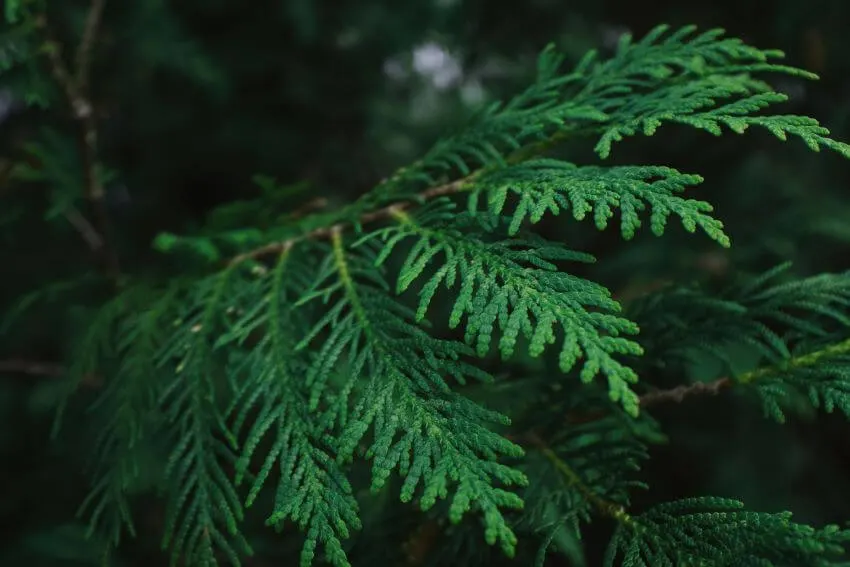
The Port Oxford cedar is a type of cypress tree and not one of the four “true cedar” tree varieties. Port Oxford cedars are also sometimes called Lawson cypress trees, and are native to certain parts of the United States (e.g. Oregon).
Port Oxford cedars are popular because they have some of the best qualities of the general cedarlike tree: strength and fast growth.
See Related: 11 Different Types of Coniferous Trees
13. Prickly cedar: Juniperus oxycedrus
The Sharp cedar is a specific, rarer type of cedar tree that only occurs in the Mediterranean region – and has a couple of qualities that sets it apart from other types of juniper trees.
This is one of the only juniper trees with a defense mechanism: spines. Where other cedars do not protect themselves in this way, the Sharp or Prickly cedar tree has evolved to include a sharp way of defense.
This type of cedar tree still shares the same characteristics as other juniper trees, including fast growth and a long lifespan that stretches longer than any single human.
See Related: Environmental Consequences of Fracking
14. Western red cedar: Thuja plicata
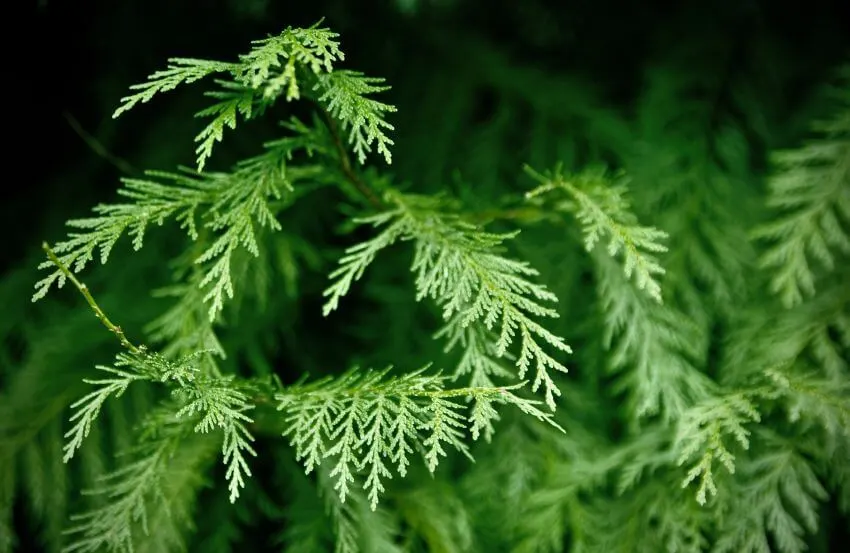
Western red cedar trees are found all along the Pacific Northwest, where they are considered a type of cypress tree (as opposed to one of the four true cedar trees by purists).
Western red cedar trees are similar to regular red cedar trees, but grow happier in the Pacific Northwest area. It is their color that gives them the designation of a “red” cedar.
Red cedars are highly adaptable and fast-growing like other types of cedar trees. They also provide a habitat for other creatures – these cedar trees are essential, but not as plentiful as they once were.
See Related: Best Sustainable Gifts
15. Yellow cedar: Cupressus nootkatensis
Yellow cedar trees are native to Alaska and are also sometimes called Alaskan cedar trees – though they are not one of the true four types of cedars, they are popular for gardeners and landscapers who need a reliable cedarlike tree with quick growth.
See Related: Energy Conservation Techniques
16. Spanish cedar
The Spanish cedar tree is one of the world’s true cedar trees, belonging to the genus Cedrela. It is native to Spain and on the endangered list as of 2021.
The Spanish cedar tree is a perfect example of the kind of cedar which exclusively prefers mountainous climates (and very high elevation) to grow.
See Related: Is Parchment Paper Compostable?
17. Australian red cedar: Toona ciliata
The Australian red cedar tree is native to Australia, though shares many qualities with other types of red cedar trees like the Eastern red cedar found in other parts of the world.
The Australian red cedar gets its name from the red coloration of its bark and wood, the same as other types of red cedar trees.
See Related: Electric Scooters Pros and Cons You Need to Know
18. White cedar: Tabebuia heterophylla
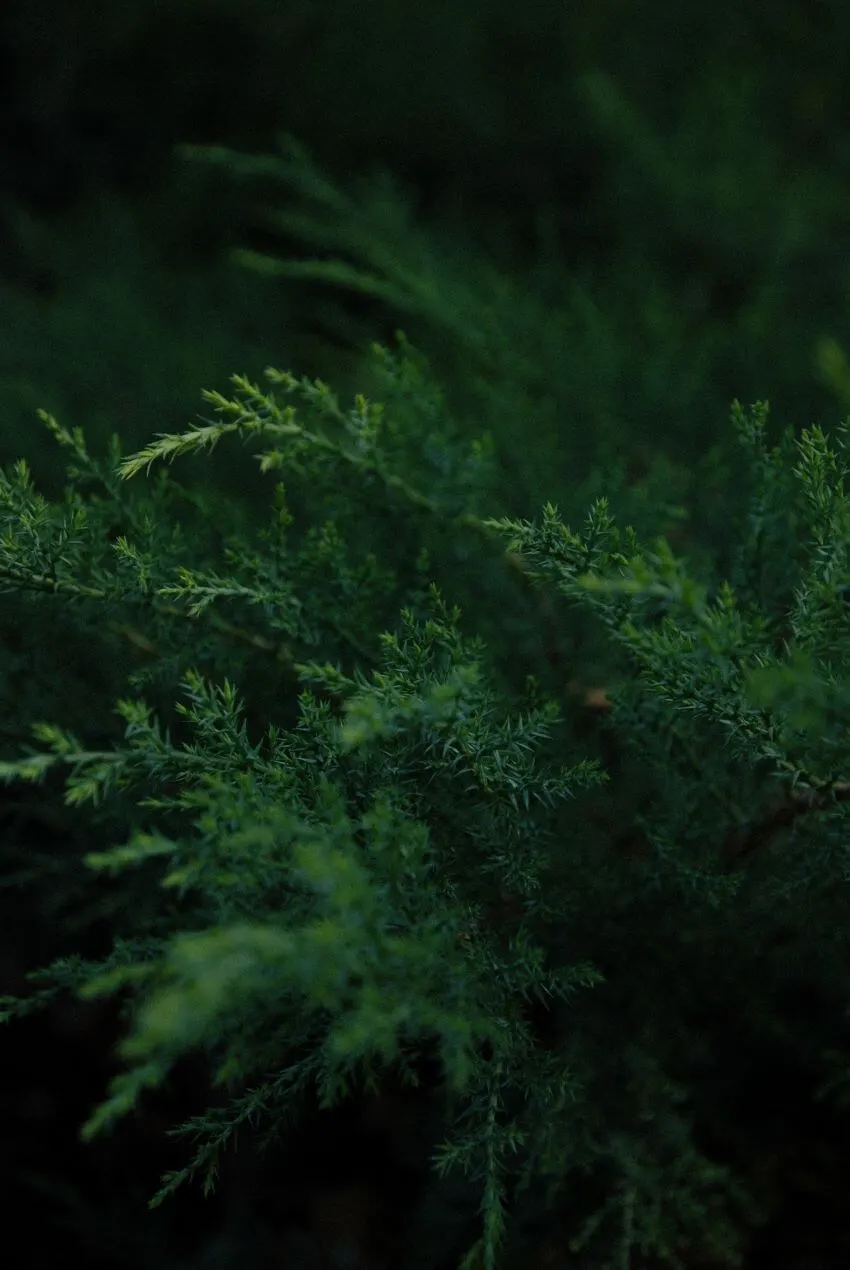
White cedar trees are not one of the four true cedar trees but are still one of the most common varieties of cedars in gardens all over the world.
The white cedar gets its name from the white wood and bark, a combination that is a strong contrast to the darker red cedar found elsewhere. White cedar trees grow happily under most conditions, and can even be adapted to grow as a bonsai under the right circumstances.
Related Resources
